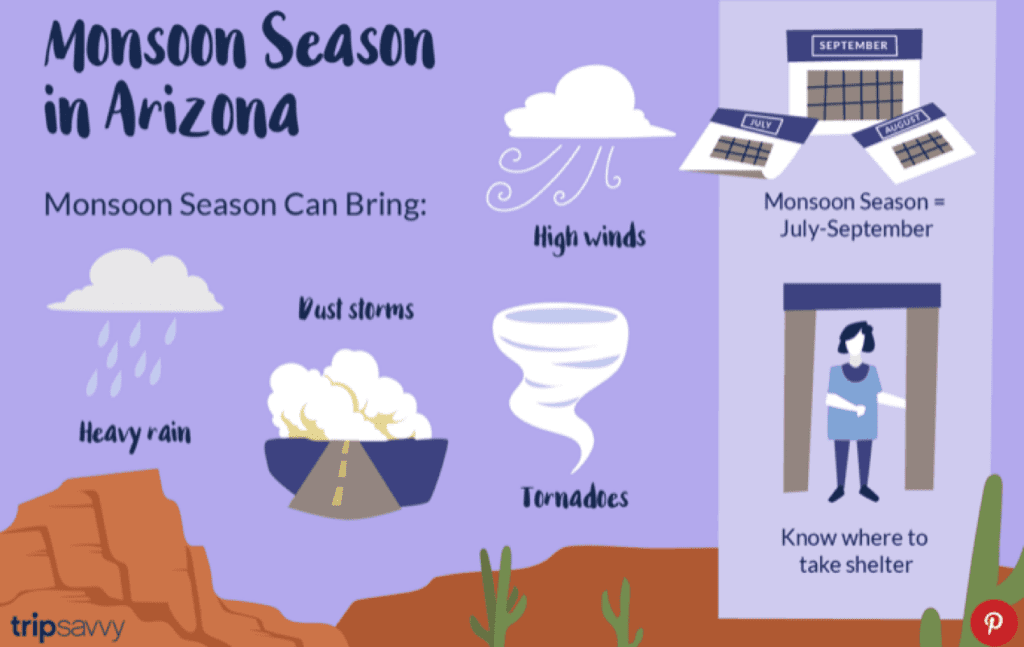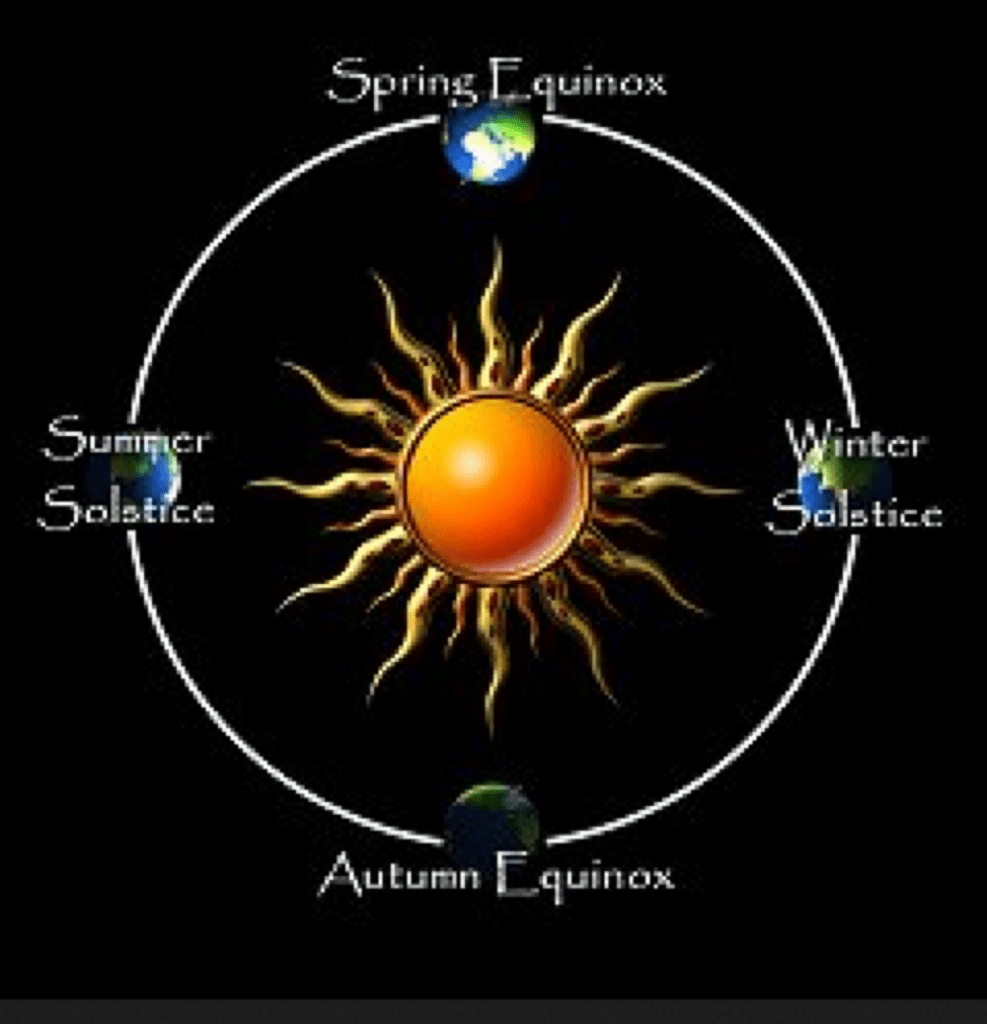Daniel Salzler No. 105
EnviroInsight.org 6 Items June 19, 2020
—————Feel Free To Pass This Along To Others——————
If your watershed is doing something you would like others to know about, or you know of something others can benefit from, let me know and I will place it in this Information newsletter.
If you want to be removed from the distribution list, please let me know. Please note that all meetings listed are open.
Enhance your viewing by downloading the pdf file to view photos, etc. The
attached is all about improving life in the watershed.
This is already posted at the NEW EnviroInsight.org
1. The 2020 Monsoon Season Has Begun. During the monsoon or summer thunderstorm season, Arizona experiences more severe weather than many other states. On some occasions, a severe storm may spawn a microburst, but more often high winds, dust, and severe downpours result in flash floods.
On average, the starting date for monsoon conditions in Phoenix is July 7 and the average ending date is September 13, but the official season starts and ends much later than the data supports —allowing for preparation for unexpected early and late-season monsoons. Historically, the earliest start date for the monsoon season was June 16, 1925, and the latest start date was July 25, 1987/ July 7 and the average ending date is September 13, but the official season starts and ends much later than the data supports—allowing for preparation for unexpected early and late-season monsoons. Historically, the earliest start date for the monsoon season was June 16, 1925, and the latest start date was July 25, 1987.

July 7 and the average ending date is September 13, but the official season starts and ends much later than the data supports—allowing for preparation for unexpected early and late-season monsoons. Historically, the earliest start date for the monsoon season was June 16, 1925, and the latest start date was July 25, 1987.
Dewpoint conditions required for monsoon weather are recorded 56 times a season on average, but the greatest number of monsoon days in Arizona was 99 in 1984 and the lowest number of monsoon days was recorded in 1962 at just 27 days.
The greatest number of consecutive monsoon days (with dewpoints above 55 degrees) was 72 from June 25 through September 4, 1984, which was also the greatest number of consecutive days with dewpoints of 60 degrees or higher.
Rainfall and Hazards of Monsoon Season
Although rain is a part of monsoon season in Arizona, high winds, dust storms, and even tornados can result from the high dewpoints recorded during the summer months. In Phoenix, normal rainfall during the height of monsoon season—in July, August, and September—is 2.65 inches, but the wettest season on record occurred in 1984 (it was a bad year) when the state received 9.38 inches of rain resulting in heavy flooding of many roads.
On the other end of the spectrum, the driest monsoon season on record occurred in 1924 when Arizona only received .35 inches of rain, resulting in a drought and a subsequently high hazard for wildfires.
Monsoon season can bring serious damage to the state as high winds can toss debris around, down trees, damage power lines, and destroy structures like roofs and shelters. Manufactured homes are especially susceptible to damage as they’re typically not designed to withstand unusually high winds or other severe weather.
In order to better prepare for monsoon season, it’s important to review safety guidelines for being caught in gale-force winds. Just like you would in a tornado, bunkering down in a door frame or the bathtub away from windows is your safest bet if you can’t get to a shelter before the storm
2. Monsoon Season Also Brings Lightning Ignited Wild Fires. Be Safe, Be Smart! Will Brewer works for Arizona State Forestry. Brewer is the Firewise® Coordinator for the Phoenix District, and more than conversant in the science behind wildfire.
“Fire is really a scientific formula. It goes wherever there are the three elements it needs to exist—oxygen, heat and fuel,” said Brewer. “And there are things we can do to take almost complete control over the availability of fuels around a home or business.” Brewer identifies those “things” as creating defensible space by thinning trees and brush, and landscaping with fire-resistant plants; building away from slopes and with fire-resistant materials; and writing an emergency plan.
Arizona State Forestry Division Firewise USATM Suggests

Individuals living in Forested areas and the Desert Areas follow the following Action Plan Outline and Application
Checklist. To get this plan outline, go to https://dffm.az.gov/sites/default/files/media/Arizona_FirwiseUSA_PlanOutline_Jan2018.pdf.
3. America’s Wildlife Crisis. State fish and wildlife agencies have identified more than 12,000 species of wildlife in need of proactive conservation efforts in the U.S.
For example:
: 41% of turtles are vulnerable or imperiled
: More than one-quarter of North American bumblebee species are facing some degree of extinction risk
: 17% of the roughly 800 Butterfly species in the U.. are known to be at risk for extinction
: 36% of freshwater fish in North America are vulnerable or imperiled.
: Approximately 40% of amphibian species (frogs, toads and salamanders) are threatened or declining in the U.S.
: One third of bird species in North Americ are in need of urgent conservation action
:70% of freshwater mussels in North America are imperiled or already extinct|
Let your representative or Congressional delegation know how concerned you are about protecting our natural species. Source: National Wildlife Federation
4. Working From Home. Telecommuting has come of age and here is why you should work from home during this pandemic. It helps you be a healthier, more productive employee Retaining experienced workers is critical to a companies success .Part time remote work offers great flexibility for all The remote friendly job market will likely explode Everyone – both employees and employers- stand to save money
Source: June AARP Bulletin 2020
On July 5, 1908, a West Virginia church sponsored the nation’s first event explicitly in honor of fathers, a Sunday sermon in memory of the 362 men who had died in the previous December’s explosions at the Fairmont Coal Company mines in Monongah, but it was a one-time commemoration and not an annual holiday.
The next year, a Spokane, Washington, woman named Sonora Smart Dodd, one of six children raised by a widower, tried to establish an official equivalent to Mother’s Day for male parents. She went to local churches, the YMCA, shopkeepers and government officials to drum up support for her idea, and she was successful: Washington State celebrated the nation’s first statewide Father’s Day on June 19, 1910.
6. Summer solstice 2020 Is June 20. Here’s why it’s a big deal, and how you can celebrate it. There isn’t much ceremony for the summer solstice in Phoenix as we’re knee deep in the heat by then and don’t need to be reminded of the longest day of the year.
But for those keeping track, the official start of astronomical summer here is 2:44 p.m. Saturday, June 20.
The start of the summer season is big deal in many parts of the world, however, and has been marked by ceremony and ritual since people first began keeping track of the sun’s position in the sky.
In a nutshell, the summer solstice is the longest day (and shortest night) of the year. In the Northern Hemisphere it takes place between June 20 and 22, depending on the year.
Astronomically speaking, it’s the point where the sun is at its highest point in the sky, directly above the Tropic of Cancer. Due to the tilt of the Earth on its axis as it orbits the sun, that means it’s the longest day of the year for every place north of the Tropic of Cancer.
In Phoenix, our solstice day is about 14 hours and 22 minutes long.
So, it’s the hottest day, right? Well, no.
A number of factors beyond day length go into how hot it gets. But even on average, whichever date the solstice falls on isn’t expected to be the hottest day of the year.
Statistically speaking, it will continue to get hotter for another three or four weeks after the solstice. In Phoenix, for example, the average temperature at the time of the solstice is 105 degrees, according to National Weather Service numbers. However, the average high is about a degree hotter than that through the middle of July before things begin to slowly cool off.
The reason is that the oceans heat up and cool down more slowly than land in reaction to the sun’s rays. And since oceans make up 70 percent of the Earth’s surface, they have a big impact on the seasons.
What the solstice signifies
The summer solstice has held significance for people pretty much since they started keeping track of such things centuries ago. In ancient times, the position of the sun was used to determine when to plant crops and perform other weather-dependent tasks. Ancient Greeks used the solstice to start the one-month countdown to the start of the Olympic games. Some Christian churches call it St. John’s Day to commemorate the birth of John the Baptist.
Not all observances of the solstice were benevolent, however.According to History.com, Vikings were said to perform sacrifices (human and animal) around the time of the solstice and hang bodies (human and animal) from trees. They also took that time to discuss legal matters and resolve disputes (perhaps adding to the sacrificial body count?).
Some pagans believed evil spirits would show up at the time of the solstice as that was when the veil between this world and the next was weakest. So they wore herbs and flowers to protect themselves. One of these plants was known as chase devil in ancient times, but now is more commonly known as St. John’s wort.
Stonehenge is solstice ground zero
Stonehenge is a huge, circular collection of rectangular stones assembled on a field in Wiltshire, England. It was believed to have been built between 3100 and 1600 B.C. Though there are plenty of theories, no one really knows why.
However, according to earthsky.org, if you stand inside the circle in just the right spot, facing northeast, on the day of the summer solstice, facing something outside of that circle known as the Heel Stone, you’ll see the sunrise above that Heel Stone.
Do other plants have solstice?
Since Earth isn’t the only planet orbiting the sun, it stands to reason that it wouldn’t be the only place with seasons and, therefore, solstices.
According to nasa.gov, Neptune, Saturn and Mars are tilted at an angle close to that of Earth. Those planets could experience seasons of similar intensity as ours, in relations to the conditions there, of course.
However, according to earthsky.org, if you stand inside the circle in just the right spot, facing northeast, on the day of the summer solstice, facing something outside of that circle known as the Heel Stone, you’ll see the sunrise above that Heel Stone.

Mars, the closest planet to Earth, would mark the summer solstice a few days after Earth’s in late June. However, due to the shape of Mars’ orbit, its seasons aren’t of equal length.
Mars, the closest planet to Earth, would mark the summer solstice a few days after Earth’s in late June. However, due to the shape of Mars’ orbit, its seasons aren’t of equal length.
A Martian year lasts 669.6 days. Martian days are very close in length to Earth days at 24.6 hours. Spring (in the Northern Hemisphere) on Mars is its longest season at 194 days while fall is the shortest at 142 days. The Martian summer lasts 178 days. Source: MSN News.
Copyright EnviroInsight.org 2020
